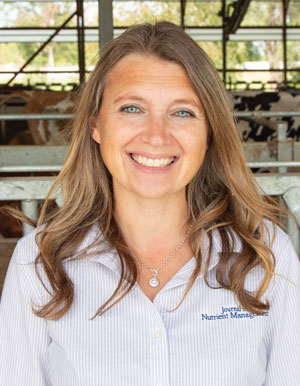
A few weeks ago, I received a phone call from a reader you might put into the “unhappy customer” category. An article he read in one of our other publications spurred him to dial our office number and air his frustration about content that focused on carbon credits, climate change, greenhouse gases, and the like.

Loud and clear, he left me with this parting thought: “Stick to farming.”
I am sure there are others out there who feel similarly, and I certainly took those comments to heart. Our three magazines are produced, first and foremost, with farmers in mind. For more than 135 years, we have aimed to share practices that work on farms and are backed by research. It is a guiding principle of our editorial team, and I want to be sure we live up to that.
Still, there is growing awareness and pressure to be more environmentally mindful. This is not just on the farm; we see it in our everyday lives. Drive less. Recycle more. Stop wasting food. Don’t use plastic straws. Things we have done for years are coming into question.
I believe most farmers would prefer to focus on farming — working with animals, crops, or equipment — over other parts of running a business, such as monitoring financials, managing employees, or planning for the future. Dealing with environmental regulations and growing requirements to reduce greenhouse gas emissions would also fall into this category.
But like it or not, much focus in this charge to save the planet is stuck on farming. A spotlight has been shined on agriculture as one of the industries that releases greenhouse gases, and that means we as livestock producers — and agriculture as a whole — are on the clock to make changes that benefit the environment. Having this finger pointed at us is frustrating, but fortunately, we have opportunities to make a difference.
Improvements have already been made and documented. In a report released by the Environmental Protection Agency (EPA), titled Inventory of U.S. Greenhouse Gas Emissions and Sinks: 1990-2022, it was stated that American agriculture reduced emissions by almost 2% from 2021 to 2022. That was the largest reduction of any economic sector and the lowest level of greenhouse gas emissions from agriculture since 2012.
These changes don’t happen overnight, and they don’t happen on their own. It takes action all along the food chain, from consumers and retailers to processors and farmers. And if we don’t want people too far up the chain making the decisions that impact us at the farm level, we need to be part of the solution. You can read how one farmer got involved with improving water quality in California’s Central Valley on page 12.
Around the globe, many eyes are focused on farming, questioning the water we use, the methane our cattle release, where our manure goes, and so on. While we may prefer to just stick to farming, that isn’t in the best interest of our businesses or the world around us.
If I toss an aluminum can in the garbage instead of the recycling bin, I am not singlehandedly ruining the planet. Similarly, one farm isn’t causing tremendous damage because of the emissions it releases. But collectively, our actions make a difference, for better or for worse. With so many critics stuck on farming as a contributor to global warming or climate change or whatever you want to call it, we really can’t separate farming from its impact on the environment. Farming and sustainability have always gone hand in hand, but now more than ever, it behooves us to be part of the conversations to tackle these environmental concerns rather than be forced to react to them someday not too far down the road.
Until next time,

This article appeared in the May 2024 issue of Journal of Nutrient Management on page 4. Not a subscriber? Click to get the print magazine.







